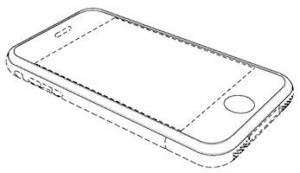Protect the Ornamental Features of Your Product, Computer User Interface or Computer Icon
Easy and Inexpensive

Design Patents are easy to apply for, and inexpensive. We charge $900 + filing fees (typically $280 if you qualify as a “micro entity”) + fees for the drawings if you can’t do them yourself (typically $350-400) for filing. For that price, we handle the preparation and filing of the design patent, as well as any “informal” rejections that the patent office might make.
Powerful Protection and Easy to Get
A design patent is infringed if an ordinary observer would think that the accused design is substantially the same as the patented design when the two designs are compared in the context of the prior art. Apple was awarded $290 million in damages on their design patent.
Design patents are easier to get than “utility” patents. All patents, including design patents, are examined by the patent office before the patent is granted. For a design patent, however, the patent office rarely makes any kind of rejection of the design patent, because most designs are unique. So in many ways it is easier to get a design patent, than it is to get a utility patent. Most design patents get allowed by the patent office right away.
Newsletter Signup
Why Choose Us?

Figure 1 of Apple’s Design Patent D593,087
We have filed more than 100 Design Patents and had 100% success rate in obtaining patents for our clients. We also have relationships with the finest drawing creators in the world. Our draftsmen (and women) created the drawings that Apple successfully enforced against Samsung!
However, you don’t have to use our drawing drafters if you want to create the drawings yourself (and save the money). See our FAQs below about design drawings.
FAQ
What is a Design patent?
A Design patent covers the ornamental features of any product. You can get a design patent in addition to getting a utility patent. If you do, the utility patent will cover the way the device operates and the design patent will cover the way the device looks. Apple has gotten design patents on the look of their iPhone, for example. To qualify for design patent protection, a design must have an ornamental appearance that is not dictated only by its function. This means that if a particular design is essential to the use of the article, that design can not be the subject of a design patent.
What kinds of things can I get a design patent on?
You can get a design patent on the shape of any package or machine or any real world object, such as a bottle or can. You can get a design patent on art — for example, the statue of liberty got a design patent (now expired) You can also get a design patent on things that appear only on a screen, such as an icon or user interface or even a font. You can patent the look of an item of clothing or jewelry. Design patents are very powerful.
Will anyone who makes a similar device infringe my design patent?
Well not anyone. The test for infringement of a design patent is whether the other product looks the same “from the point of view of an ordinary observer”. That means that if somebody tries to copy your device but make some insubstantial changes, that likely will infringe your design patent. However, if someone makes a similar device that does a similar thing but looks completely different, that won’t infringe your design patent.
Will there be any other fees to get the design patent (other than the filing fees, quoted above)?
When your patent is allowed, there will be an issue fee that you need to pay to the patent office which you pay for them to issue your patent. Right now, I charge $750 (including patent office fees) to handle the issue fee. (The amount of that fee can change when the patent office fee changes.)
Can I do the drawings myself?
Yes, but the drawings for a design patent need some very special things. Here are the views I would need drawn, to apply for a design patent. All of these need to be black and white line drawings:
Front perspective view (showing the device in perspective). Label that Figure 1
Figure 2 : front view
figure 3 : rear view
figure 4 : first side view
Figure 5: second side view (opposite side from Figure 4)
figure 6 : top view
Figure 7 :bottom view.
Also, you need to create a projection sheet, showing all of the drawings on one sheet to show that the scales are the same. Here are some more rules:
Margins
(c) On sheets containing drawings, the surface usable shall not exceed 26.2 cm x 17.0 cm. The sheets shall not contain frames around the usable or used surface. The minimum margins shall be as follows:
– top: 2.5 cm
– left side: 2.5 cm
– right side: 1.5 cm
– bottom: 1.0 cm
The drawings shall not contain text matter, except a single word or words, when absolutely indispensable, such as “water,” “steam,” “open,” “closed,” “section on AB,” and, in the case of electric circuits and block schematic or flow sheet diagrams, a few short catchwords indispensable for understanding.
Drawings shall be executed in durable, black, sufficiently dense and dark, uniformly thick and well-defined, lines and strokes without colorings.
Cross-sections shall be indicated by oblique hatching which should not impede the clear reading of the reference signs and leading lines.
The scale of the drawings and the distinctness of their graphical execution shall be such that a photographic reproduction with a linear reduction in size to two-thirds would enable all details to be distinguished without difficulty.
All numbers, letters and reference lines, appearing on the drawings, shall be simple and clear. Brackets, circles or inverted commas shall not be used in association with numbers and letters.
The height of the numbers and letters shall not be less than 0.32 cm. For the lettering of drawings, the Latin and, where customary, the Greek alphabets shall be used.
Can I get a design patent on something that I saw that isn’t already patented?
You can only get a design patent on something that you yourself invented. If you invented the design, and then saw something similar, you might still be able to patent your design. However, you can’t patent someone else’s design.
How long does a design patent last?
A design patent lasts 14 years from the date it is granted.


